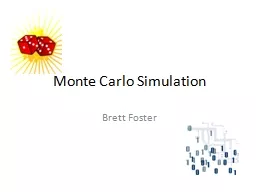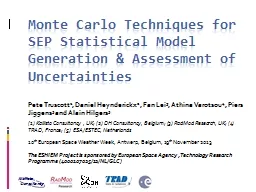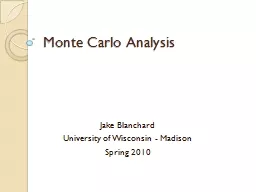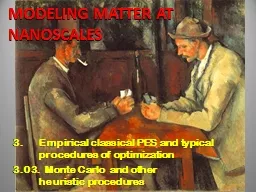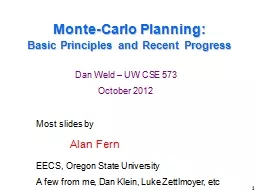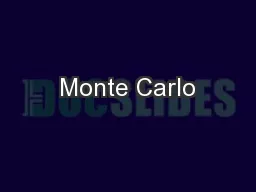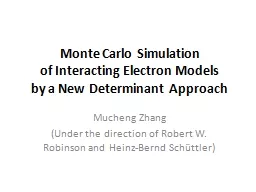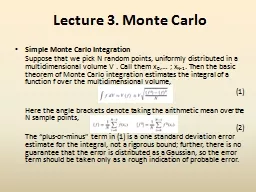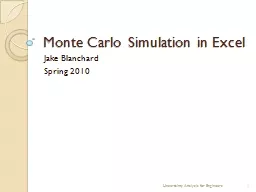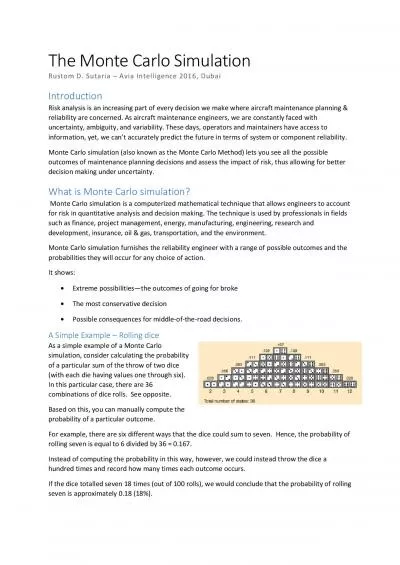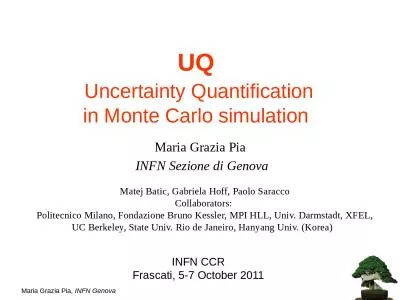PPT-Monte Carlo Simulation Brett Foster
Author : test | Published Date : 2018-11-03
Monte Carlo In A Nutshell Using a large number of simulated trials in order to approximate a solution to a problem Generating random numbers Computer not required
Presentation Embed Code
Download Presentation
Download Presentation The PPT/PDF document "Monte Carlo Simulation Brett Foster" is the property of its rightful owner. Permission is granted to download and print the materials on this website for personal, non-commercial use only, and to display it on your personal computer provided you do not modify the materials and that you retain all copyright notices contained in the materials. By downloading content from our website, you accept the terms of this agreement.
Monte Carlo Simulation Brett Foster: Transcript
Download Rules Of Document
"Monte Carlo Simulation Brett Foster"The content belongs to its owner. You may download and print it for personal use, without modification, and keep all copyright notices. By downloading, you agree to these terms.
Related Documents

